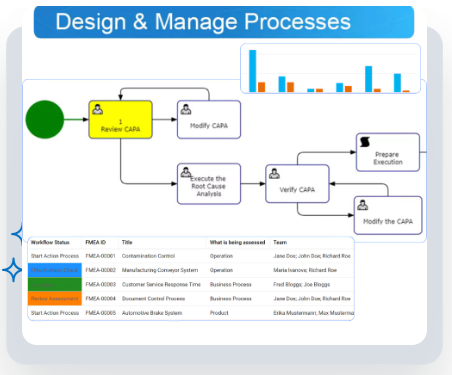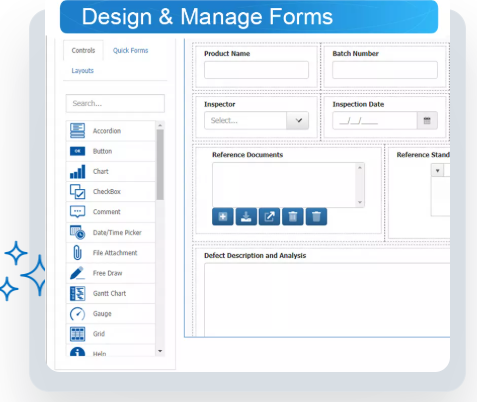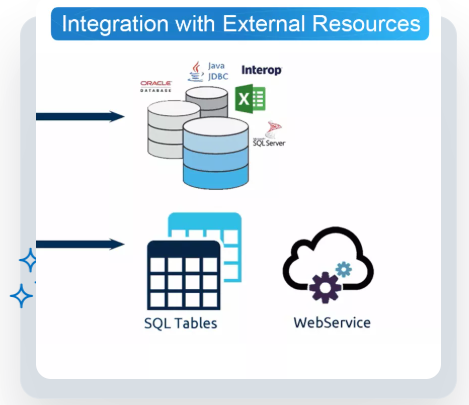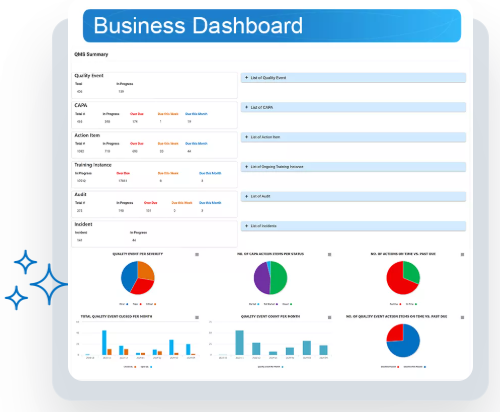Introduction to business process automation
Through the automation of assembly lines, in 1913, Henry Ford reduced the manufacturing time of an automobile from 12 hours to 1.5 hours; this...
By Role
By Industry
By Target Customer
What We Offer
We drive business growth by improving operational efficiency through process optimization, smart automation, and cost control. Our approach boosts productivity, reduces expenses, and increases profitability with scalable, sustainable solutions
Customer Experience
We design memorable, customer-centered experiences that drive loyalty, enhance support, and optimize every stage of the journey. From maturity frameworks and experience maps to loyalty programs, service design, and feedback analysis, we help brands deeply connect with users and grow sustainably.
Marketing & Sales
We drive marketing and sales strategies that combine technology, creativity, and analytics to accelerate growth. From value proposition design and AI-driven automation to inbound, ABM, and sales enablement strategies, we help businesses attract, convert, and retain customers effectively and profitably.
Pricing & Revenue
We optimize pricing and revenue through data-driven strategies and integrated planning. From profitability modeling and margin analysis to demand management and sales forecasting, we help maximize financial performance and business competitiveness.
Digital Transformation
We accelerate digital transformation by aligning strategy, processes and technology. From operating model definition and intelligent automation to CRM implementation, artificial intelligence and digital channels, we help organizations adapt, scale and lead in changing and competitive environments.
Operational Efficiency
We enhance operational efficiency through process optimization, intelligent automation, and cost control. From cost reduction strategies and process redesign to RPA and value analysis, we help businesses boost productivity, agility, and sustainable profitability.
Customer Experience
Marketing & Sales
Pricing & Revenue
Digital Transformation
Operational Efficiency
When I talk to a CEO, CFO, or COO, I usually start with the same idea: If technology doesn't accelerate the business, it only adds noise. That's why, when we implement Interfacing's Digital Business Platform (DBP) from ICX, we want you to feel results in weeks: fewer manual steps, more visibility, and controls that are "self-executing" within the flow. Think of DBP as a control tower for your operation: it orchestrates tasks, connects systems, and shows you what's going on in real time, without your team having to become programmers. DBP is a low-code platform designed to build applications from simple forms to critical processes quickly and easily managed, with modules for forms, processes, data, tasks, rules, dashboards, and operational monitoring.
DBP is the "toolbox" we need to transform processes into work applications. Instead of asking for months of development, the platform comes with ready-to-put pieces together: we design forms to capture information, flows to move work between people and systems, entities to store data, rules to automate decisions, and dashboards to see performance. Everything lives in a central repository (the EPC ecosystem of Interfacing) that allows us to standardize and reuse what we already build, with support for BPMN 2.0 the visual standard for processes and export/import to open formats. In plain language: what we document and automate today is still useful tomorrow, and can be shared with other tools when needed.
Today, businesses fail not because of a lack of ideas, but because of a lack of sustained execution. DBP helps us land, fast and frictionless, the "should work like this" in a flow that the team actually uses. In addition, it gives us something vital for anyone who reports to a directory: traceability. Who did what, when, and under what rule is recorded, with approvals, auditing, and e-signature options when applicable. That reduces risk and compliance cost, without turning day-to-day life into an obstacle course.
I start by discovering the outcome that the business wants to achieve: fewer cycle days, fewer reprocesses, more first-time sales, better NPS. With that clear, we go through four practical steps:
1) Ground the process: We draw how work runs today AS-IS and how TO-BE should run tomorrow. If drawing processes sounds abstract to you, think of a GPS: we mark where the "journey" comes from, what routes it can take, where it gets stuck and what detours there are. With DBP that map becomes executable; it ceases to be "a pretty drawing" and becomes the script of the operation.

2) Build a working prototype (not just screens): In a few iterations, we put together a navigable version with forms, rules, and real tasks. It's like building with LEGO bricks: first the essentials to make it stand; Then we add details and automate. The objective is to test with real cases – not presentations – and adjust with the team that will live the process.

3) Connect what you already have: We rarely start from scratch. DBP comes with a ready-made integrations and connectors module (e.g. for Jira) and also allows you to import or export to standard formats (Visio, Excel, Word, BPMN) or migrate from other suites (Blueworks, Promapp, ARIS, Signavio, Adonis). This way we avoid "re-digitizing" the history of your company and reduce the famous resistance to change.

4) Deploy with control and measure: Adoption is not an afternoon workshop. We leave dashboards and operational monitoring ready to identify bottlenecks, governance to version changes without breaking anything, and a timeline for improvements. The important thing: that the process runs smoothly and that you see the KPI move with real data from the beginning of the project.

For users, DBP looks like a smart inbox: they receive tasks with context, deadlines, and rules that are already "in place." If a validation fails, the platform guides what to do. If an approval is required, it is triggered with the correct history. And if something is delayed, the system warns and leaves a record. It is not a matter of putting more screens, but of eliminating unnecessary steps and "gluing" the systems so that the information flows without reprocessing. At the end of the day, fewer clicks, fewer emails, fewer loose Excels.
When we say "integrate", we are not talking about an infinite project. Thanks to the integration designer and API, we connect DBP with ERP, CRM, portals and data warehouses. If your company has already modeled processes in other tools, we can import those maps and attributes to reuse them, instead of starting from scratch. It's like changing the kitchen without knocking down the walls: we reuse what is valuable and only replace what doesn't work.
Control is no longer an extra task. Roles, permissions, auditing, signatures, and approval cycles are set up within the process, so that control happens while working, not after. For regulated industries (healthcare, pharmaceutical, aerospace, financial), Interfacing documents capabilities aligned to GxP and 21 CFR Part 11 —facilitating audits and reducing findings—and offers quality management, CAPA, and audits on the same basis. Compliance is no longer "filling out a checklist" and becomes a natural part of the process.
Suppose invoicing takes 17 days today because sales, finance, and logistics operate in silos. With DBP we define the "happy path" (approved order → availability → dispatch → invoice) and deviations (pending credit, stock-out, return). The system assigns tasks, executes rules (e.g., discount limits), and leaves audit trails. If a piece is missing, it does not "disappear" in an email: it is seen on a board. That visibility and automation of repetitive steps shortens the cycle and reduces errors.
>> Business Model Canvas: Osterwalder-Pigneur and alternatives <<
For General Management, DBP offers traction: initiatives that leave PowerPoint and change indicators with a controlled risk. For Finance, it means measurable efficiency and better internal control without increasing headcount. For Operations, less friction and predictable flow. For Risk/Compliance, reliable evidence "listed" at every step. For IT, a platform that gets along well with what already exists and supports good security practices and certifications (e.g., ISO 27001) within the Interfacing portfolio.
Interfacing brings a mature and recognized platform in BPM, QMS, GRC and low-code; ICX provides the consulting, architecture and execution that lands the technology on business objectives: sales, efficiency, risk and customer experience. In addition, Interfacing maintains a partner program that allows us to accelerate with templates, training, and manufacturer support, which translates into less risk for you and more speed for your roadmap.
If you are looking to execute faster and with control, DBP is a "clicking" piece with your strategy. At ICX we take care of the entire cycle: diagnosis, design, low-code construction, integrations, compliance, deployment and continuous improvement. Let's start with a critical business model, measure impact in cycle, cost and compliance, and scale from there with discipline. If you want, we put together a pilot with your data for your team to test live.

Through the automation of assembly lines, in 1913, Henry Ford reduced the manufacturing time of an automobile from 12 hours to 1.5 hours; this...

When I accompany companies in their transformation projects, I usually find a common denominator: the Order to Cash (O2C) process is full of...

When we at ICX talk about process management and automation, we think not only about "drawing processes", but also about making those models "alive",...